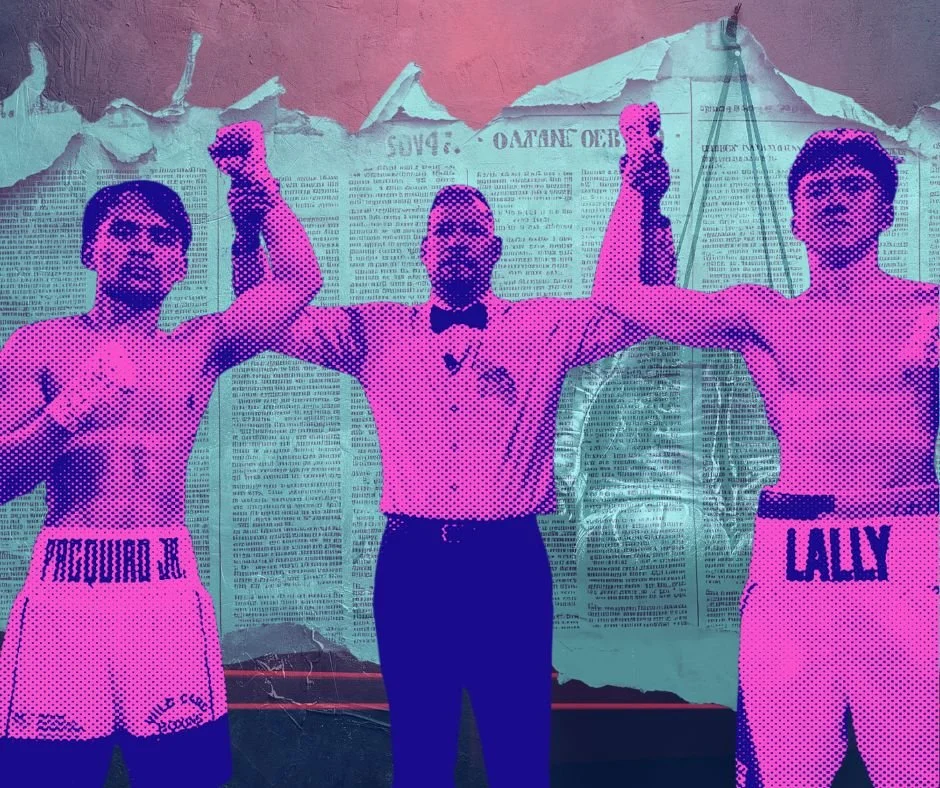Top 10 Filipino Wedding Superstitions
Filipino weddings are not just about exchanging vows and dancing the night away; they're also steeped in centuries-old superstitions that add a layer of intrigue and mystique to the celebration. While we’re not sure where most of them originated, but its fun to speculate and have a little laugh over. Let's dive into some of the superstitions that we’ve heard of:

Rain on Your Wedding Day: Rain on your big day? In many cultures, that's a sign of good luck. But in the Philippines, it's believed to symbolize a tearful marriage. To ward off this supposed bad omen, some couples jazz up their accessories with an umbrella or sprinkle rain-themed elements into their décor. Who knew rain could be so dramatic?
Wearing Pearls: Pearls are classy, right? Not on your wedding day, according to Filipino superstition. Wearing pearls is thought to bring tears and sorrow to your marriage. So, maybe save the pearls for another day and opt for some bling that's more on the lucky side.
Bride Tripping: Clumsy brides, rejoice! Tripping on your way to the altar is believed to bring good luck to your marriage. It's like stumbling into a (un) happily ever after.
Seeing a Black Cat or Passing a Funeral: If you cross paths with a black cat or a funeral procession on your way to the wedding, it's considered a bad omen. But hey, don't let a little superstition rain on your parade—maybe just take a different route!
Dropping the Wedding Ring: Oops! Dropping the wedding ring during the ceremony is said to bring bad luck. To avoid this mishap, some couples have a ring guardian to keep it safe until it's time to exchange vows. Safety first, right?
Sweeping the Feet: It's all fun and games until the bride sweeps her feet off the ground while walking to the altar. That's believed to sweep away her luck! Better watch those steps, bride-to-be!
Counting the Steps: After the "I do's," make sure you and your partner take an odd number of steps together. Even numbers are a no-go, as they're associated with bad luck. Who knew walking could be so superstitious?
Crying Baby: A baby's cry might be music to your ears on your wedding day. It's believed to bring good luck, symbolizing that you and your partner will have children. Talk about a sweet serenade.
Seeing a Rainbow: Spotting a rainbow on your wedding day? Now, that's a good sign! It's believed to bring blessings and good fortune to your marriage. A colorful start to your happily ever after.
Sukob: Planning to tie the knot in the same year as your sibling? Think again! According to this superstition, it's bad luck for siblings to marry in the same year. Best to stagger those wedding dates for a double dose of luck!
These superstitions are like little whispers from the past, reminding us of the magic and mystery that surround Filipino weddings. Whether you believe in them or not, they add a touch of enchantment to an already unforgettable day. But remember, these superstitions are not scientifiically founded or universally believed or followed, so don’t fret if you see a little rain on your wedding day . They are more of a cultural curiosity and add to the folklore and mystique surrounding weddings in the Philippines. So, here's to love, laughter, and a sprinkle of superstition (at least all the good ones, that is!) on your special day!
On October 11, 2025, Maureen Blanquisco officially carved her name in the Bodybuilding hall of fame with her 1st place victory at the Ms. Olympia Bikini competition. This 2025 win made her a 2x champ in the sport, which is an accomplishment only held by 3 other women in bodybuilding history.
Jimuel Pacquiao’s pro debut ends in a majority draw, raising big questions about legacy, pressure, and the first steps of his boxing journey.
Maybe it’s time to stop defining who we are by what we’ve suffered, and start loving who we’ve become.
For decades, visibility was the dream. Filipino Americans looked at city councils, state legislatures, and Congress and wondered: When will we finally be seen? When will our names, our faces, our accents belong in the political landscape of the country we helped build?
In observance and celebration of Veterans Day, I have the special honor of interviewing someone who means the world to me — my dad. He is a proud U.S. Army veteran and a proud Filipino American whose journey reflects both courage in service and strength in identity.
Loving a Country You No Longer Live In: When Filipino American Power Meets Philippine Politics
Rico Hoey grew up playing golf and even shared his home course of Goose Creek Golf Club (Mira Loma, CA) with fellow PGA tour member, Sahith Theegala. In an interview with Fore Magazine in 2023, Theegala told Fore Magazine that “Hoey is a genuine person who makes it fun to be around”.
COCOLAB was founded by sisters Dr. Chrystle Cu and Catherine Cu. Dr. Chrystle Cu, a dentist, is passionate about enhancing oral care products. Catherine Cu, an artist, contributes her design expertise to the business.
Known for transforming the simplest ingredient, the egg, into crave-worthy comfort food, Eggslut became phenomenon. And at the center of it all is its founder, Alvin Cailan, a Filipino-American with a vision.
In the world of event activations and experiential marketing, standing out is not easy. You’ll find yourself competing against companies that have been operating for years or even small boutique agencies. The Lounge Booth, has quickly become the go-to for brands, celebrities, and influencers seeking an elevated, one-of-a-kind photography experience.
Chef Danielle Comerford, explores the rich culinary heritage of the Philippines in Episode #3: Kain Tayo of the Netflix docuseries 1 in 7641. The episode follows Comerford as she journeys through Bacolod, Pampanga, and Ilo-Ilo, sampling diverse local dishes.
Being Filipino American in California is not the same as being Filipino American in Ohio. Identity shifts with geography - and organizing must too.
As Filipino American History Month comes to a close, DISKARTE: Coalition reminds us that culture isn’t just something to celebrate — it’s something to build from.
From basketball courts to kitchens, DJ booths to art studios, DISKARTE is turning Filipino creativity into collective power.
In Filipino culture, a failed marriage is not just heartbreak - it’s treated like a family shame. But silence only deepens the wounds.
‘Noise Complaints’ has collaborated with artists such as DJ Sparky, RECAP, DJ Jehred, DJ LEX, and Miles Medina, among others. By spotlighting these talents, Noise Complaints not only provides a platform for their creativity.
Mariah Carey just made it official. Christmas has begun — in October, in Manila. The Queen of Christmas didn’t wait for December to drop All I Want for Christmas Is You live, and honestly, that’s the most Filipino-coded thing ever.
She’s always said her Filipino fans are some of her most loyal, and this time she proved the love is mutual. Sparkly gown by Michael Cinco, whistle notes on point, and a crowd that sang every line like it was Noche Buena.
Jae'roze Tate is a Filipino African American musical artist who blends English and Tagalog in her rap lyrics. Born and raised in the Philippines, she later moved to the United States for higher education.
Our parents dreamed of retiring in the Philippines. But if we only buy condos we rarely live in, we’re not building wealth - we’re burying it.
Professional basketball player turned media-tech entrepreneur. Jared Dillinger played in the Philippine Basketball Association (PBA) for 18 years and won 9 PBA championships throughout his career.
rofessors Emmanuel David and Yumi Janairo Roth have extensively researched this forgotten group, publishing their findings in February 2024 in Playing Filipino: Racial Display, Resistance, and the Filipino Rough Riders in Buffalo Bill’s Wild West .
Maris Racal brings Antoinette Jadaone’s award-winning film Sunshine to the 2025 San Diego Filipino Film Festival as the Centerpiece Presentation. The coming-of-age drama about a young gymnast facing impossible choices continues its global run.
Outsourcing isn’t job creation. It’s wage theft with a passport - even when Filipinos do it to Filipino.
























It all started with a table outside of a Seafood City in 2015.
LEAD Filipino volunteers were on hand with clipboards and flyers for a Filipino voter registration drive. It was an early campaign for the grassroots organization, which grew out of a desire to build Filipino civic voice and representation.
Read More